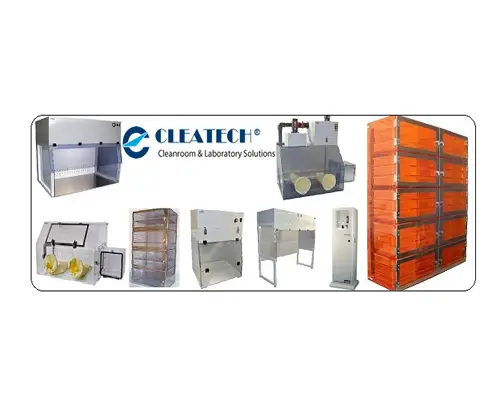Original Source: https://laboratoryquipment.blogspot.com/2020/04/5-types-of-laboratory-fume-hoods-and.html
A traditional laboratory fume hoods have a box with a movable sash window-like structure. To ensure full protection, the fume hoods should be properly sited. Due to pedestrian flow, doors and supply air diffusers locate hoods to prevent crosscurrents at the hood nose. Sufficient laboratory supply air must be available to allow hoods to work at their required face velocities. The hood works by maintaining a fairly negative pressure within the hood to prevent any contaminant from escaping while at a constant pace drawing air through the hood opening. A suitable hood face velocity is of interest for the safe and efficient function of a laboratory fume hood. While excessive face velocities can often lead to friction and reduced containment, the hood’s efficiency can also be compromised by insufficient speeds. Overall, the face velocity of a hood is recommended to vary between 0.3 m / s (60 fpm) and 0.5 m / s (100 fpm), but it is necessary to test the face velocity recommendation with local safety legislation before using the fume hoods. Most hoods are usually designed for a minimum face velocity at full sash opening; but as a means to save energy, some hoods design the hood’s minimum face velocity at the half-sash opening, producing new low-flow laboratory fume hoods, which are now on market.
Although there is various type of Laboratory fume hoods, 5 of them are renowned among the user due to their different properties. Let’s have a look upon the same:
Bench-top Fume Hood – A fume hood at the bench-top is normally mounted on a bench-top or above a storage cabinet. Bench-top hoods are used for a wide variety of chemical procedures that require small to moderate quantities of low to high toxic materials. Benchtop Fume Hoods have efficient containment and emissions of low particulate mass gases, vapor, mists, fumes, and other aerosols.
Distillation Fume Hood- A distillation hood is defined by a low height of the work desk, which results in the operator having a wide working height. It allows for the installation and positioning of large distillation equipment in the workroom. Otherwise, it has features similar to those of a regular fume hood. The hood is unable to withstand fires since the sash is fully sealed. If there is an explosion hazard, the user should have adequate strength to deflect or contain the anchored barriers, shields or enclosures.
Perchloric Acid Fume Hood- The perchloric acid reacts with organic materials violently. The perchloric fume hoods also require built-in water wash-down systems to prevent salt deposits from being perchlorinated. Both treatments use perchloric acid must be limited to a perchloric fume hood to avoid adverse interactions with certain chemical substances. Perchloric acid should not be used with a traditional fume hood. Perchloric acid vapours may settle to ductwork, resulting in perchlorate crystals being deposited.
To Radioisotope Fume Hood- Radioisotope fume hoods are designed primarily to protect users from hazardous materials. We have specially designed workstations to withstand the weight of lead shielding tiles, and may also have lead-laced sashes. For decontamination purposes, the interiors are made of stainless steel with polished corners.
Floor Mounted Fume Hood- For applications involving large Lab equipment, floor-mounted fume hoods are used. These hoods, as the name implies, are mounted on the floor, without any work surface. It allows the movement of materials and machinery into and out of the hood. Mounted floor hoods are often referred to as walk-in fume hoods, although incorrectly.
This Information is regarding laboratory Fume mostly usually used 5 type hoods and their variety like, how reliable and safe it is, how it protects user-health from various harmful gases it will be easy for the user to choose which one suit best for their needs and important facts to ensure its full protection. So, the user won’t be afraid of trying these 5 Laboratory Fume Hoods. Now that everybody will be easily similar about types of Laboratory fume hood and its properties, which will be very useful to attract the several user/customer, and it will automatically improve the trade as well.
We have everything that anyone requires to make a lasting impression on the users who are associated with a laboratory fume hood.
If users have any queries regarding above-mentioned types of laboratory fume hood, they can feel free to contact us.






